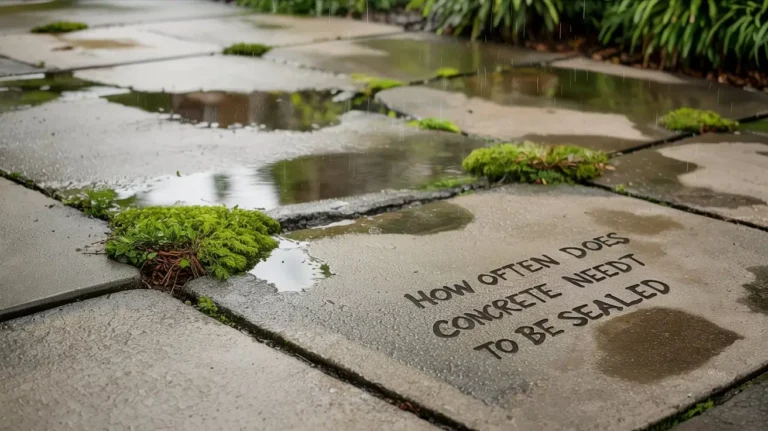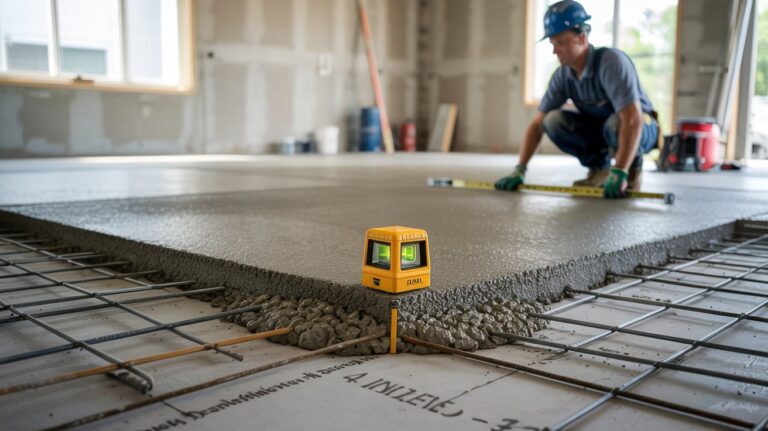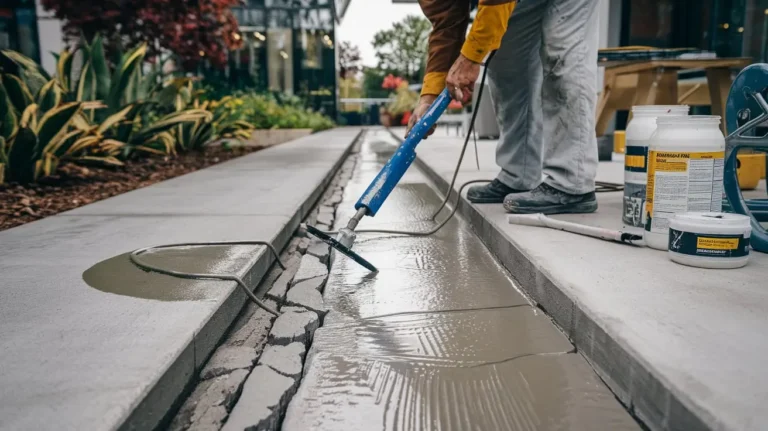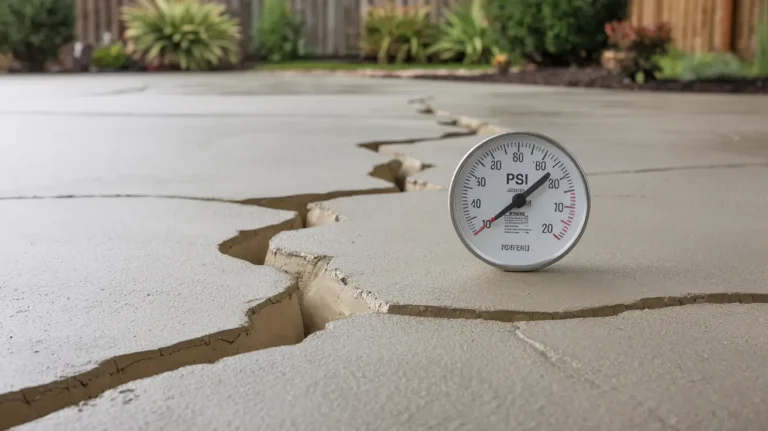Pros and Cons of Concrete Patio

When considering a concrete patio, you’ll want to weigh the pros and cons. On the plus side, concrete patios are durable, cost-effective, and offer endless design possibilities.
They’re also low maintenance and eco-friendly. However, they can be prone to cracking, and repairs can be challenging. Additionally, concrete patios are permanent structures that require careful planning and design.
By understanding these advantages and disadvantages, you’ll be better equipped to make an informed decision about your outdoor space, and discover how to make the most of this versatile and practical option.
Durability and Longevity of Concrete Patios
When it comes to outdoor living spaces, durability and longevity are top priorities, and concrete patios deliver on both fronts.
You can expect your concrete patio to outlast your time in the home, withstanding heavy furniture, high foot traffic, and extreme weather conditions.
With proper installation and sealing, concrete patios can minimize the risk of cracks, making them a great long-term investment.
Unlike natural stone patios, concrete patios are resistant to pests, mold, and mildew, and can be stained or painted to match your existing exterior design elements.
By designing and building with reinforced concrete, you can create a durable outdoor living space that will outlast pavers or natural stone.
Working with experienced concrete patio contractors will guarantee a high-quality finish that meets your pros and cons checklist.
Cost-Effectiveness and Affordability
You’ll be pleased to know that concrete patios are an affordable option for outdoor spaces, especially when compared to other materials. The ease of installation makes the price more economic and affordable, making concrete patios a great option for homeowners on a budget.
| Material | Upfront Cost | Long-term Expenses |
|---|---|---|
| Concrete | Lower | Reduced |
| Natural Stone | Higher | Increased |
| High-end Pavers | Expensive | Higher |
Hiring a professional to install a concrete patio is a cost-effective option, as it guarantees a durable and visually appealing result while minimizing the risk of costly repairs. Overall, concrete patios offer a more affordable option for outdoor spaces, with lower upfront costs and reduced long-term expenses, making them an attractive choice for those on a budget.
Versatility and Aesthetic Options for Concrete Patios
Many homeowners are surprised to discover that concrete patios offer an unparalleled level of versatility and aesthetic options.
You can customize your concrete patio to match or complement your home’s color scheme, with unlimited design options. The wide range of stamps, dyes, and colors available makes it easy to create a unique design that fits your individual tastes and styles.
You can also use decorative concrete to create intricate designs and patterns, achieving stunning, high-end looks without the associated costs.
Additionally, concrete patios can be designed to fit any size or shape, making them a great option for small or large outdoor spaces.
Low Maintenance Requirements for Concrete Patios
Concrete patios not only offer versatility and aesthetic appeal but also boast low maintenance requirements, making them an attractive option for homeowners seeking to create an outdoor space that’s both beautiful and hassle-free.
You’ll find that daily maintenance is simple, requiring only a sweep and occasional wash with a hose and mild detergent to keep your patio looking great.
| Task | Frequency | Description |
|---|---|---|
| Sweep | Daily | Remove dirt and debris |
| Hose and mild detergent wash | Occasional | Clean the patio surface |
| Apply sealant | Every 5 years | Protect the patio from the elements |
| Pre-winter preparation | Annually | Clean and seal the patio before winter |
As a bonus, concrete patios are resistant to pests, mold, and mildew, reducing the need for frequent cleaning and maintenance. By following these easy maintenance tasks, you’ll be able to enjoy your patio for years to come.
Environmental Benefits of Choosing Concrete Patios
The environmental benefits of choosing a concrete patio are substantial, with sustainable production methods and eco-friendly materials combining to reduce your outdoor space’s carbon footprint.
By opting for a durable patio made from concrete, you’re supporting a sustainable option that conserves natural resources. Many concrete mixtures incorporate recycled materials, reducing waste and environmental impact.
This approach also minimizes the need for frequent repairs and replacements, which can harm the environment. Additionally, using locally sourced materials reduces transportation emissions and supports the local economy.
Some concrete mixes can even be designed to absorb carbon dioxide from the atmosphere, making them a carbon-neutral or carbon-negative option.
Prone to Cracking and Repair Challenges
You’ll likely face one major drawback when opting for a concrete patio: its tendency to crack over time.
As a result, you’ll need to address these cracks, which require patching to prevent further damage. Repairs for cracks require a structural filler to guarantee the integrity of your patio.
Unfortunately, concrete is prone to cracking, making it one of the biggest cons of concrete patios. If you notice a crack in the first year, it may indicate lower quality concrete was used for your patio.
This can lead to a gray look and a weakened structure. Regular maintenance can help prevent cracks, but it’s crucial to be prepared for the possibility of repairs down the line.
Safety Concerns With Slippery Surfaces
When you have a concrete patio, you need to be aware of the safety concerns that come with slippery surfaces.
In areas with high rainfall, your patio can become a slip hazard, and chips or cracks in the concrete can be a tripping risk if not repaired promptly.
To guarantee your safety, it’s vital to weigh these factors and take necessary measures to minimize the risks.
Slip Hazards in Rain
How vulnerable is your concrete patio to slip hazards in rainy conditions? As a homeowner, it’s crucial to weigh the safety risks associated with slippery surfaces. In areas with high rainfall, concrete patios can become hazardous, especially when oil, grease, or other substances are present.
| Factors | Effects | Prevention Measures |
|---|---|---|
| Rainfall | Increases slipperiness | Add aggregate to concrete mixture or select textured design |
| Oil/Grease | Exacerbates slipperiness | Regular cleaning and maintenance |
| Lack of Traction | Increases accidents | Apply non-slip sealant or coating |
| Dirt/Grime | Increases slipperiness | Regular cleaning and maintenance |
| Inadequate Design | Increases slipperiness | Select textured design or add aggregate to mixture |
Tripping Risks in Cracks
Cracks in your concrete patio can pose a significant tripping risk, especially when they’re hidden by slippery surfaces.
You mightn’t notice them, but they can cause serious accidents, especially for the elderly or young children.
As an alternative, consider replacing your concrete patio with pavers or natural stone in a linear form, which can provide better traction and reduce tripping risks.
A simplistic style can also help draw attention to potential hazards.
When it comes to outdoor functionality, it’s vital to prioritize safety alongside aesthetics.
Be mindful of your surface material and take steps to prevent cracks from forming or filling them promptly to minimize tripping risks.
Professional Installation and Design Considerations
A well-designed and professionally installed concrete patio can elevate your outdoor living space, but it requires careful consideration of several key factors.
When choosing a material, you’ll need to weigh the pros and cons of a concrete patio against alternatives like pavers and natural stone. Material selection will impact design, functionality, and cost savings.
Consider the installation process and how it will affect your daily routine. A professional installer can help you navigate these decisions and guarantee a successful outcome.
They’ll assess your site’s conditions, recommend the best material, and design a patio that meets your needs. By working with a pro, you can create an outdoor space that enhances your lifestyle and increases your property’s value.
Permanence and Difficult Repair Concerns
While a well-designed concrete patio can be a valuable addition to your outdoor living space, it’s crucial to weigh the permanence and potential repair concerns associated with this material.
Concrete patios are permanent structures that can’t be easily moved or relocated, making it essential to carefully plan and design the patio before installation.
Three key permanence and repair concerns to ponder:
- Difficult and costly repairs: Repairing a damaged concrete patio can be challenging, costly, and time-consuming, and may require professional assistance.
- Visible patching and aesthetic impact: Cracks in concrete patios can be difficult to repair and may require extensive patching, which can be visible and affect the overall aesthetic of the patio.
- Expensive replacement: In some cases, it may be more cost-effective to replace the entire patio rather than attempting to repair extensive damage, which can be a significant expense.
Frequently Asked Questions
Is a Concrete Patio a Good Idea?
When considering a backyard renovation, you’ll want a space that’s perfect for outdoor living, and a concrete patio can be a great idea, offering design flexibility, low maintenance, and a budget-friendly option that’s weather-resistant and provides ample space for patio furniture, with numerous color options to enhance aesthetic appeal.
What Are the Problems With Concrete Patios?
You’ll be surprised to know that 75% of concrete patios show signs of damage within 5 years. You’ll likely face issues like cracked surfaces, fading colors, weed growth, and slippery texture, which lead to stains difficulty, heavy maintenance, limited design, weather damage, high installation, and structural issues.
How Much Does a 20X20 Concrete Patio Cost?
When planning your patio installation, you’ll find the cost of a 20×20 concrete patio varies depending on cost factors like material quality, labor costs, and patio design, with prices ranging from $3,000 to $6,000, impacting your budget planning and patio maintenance.
Is It Better to Have a Deck or Concrete Patio?
When deciding between a deck and a concrete patio, you’re choosing between a rustic outdoor space and a modern backyard oasis. Consider your patio design: do you want a cozy living area with seating options, patio furniture, and an outdoor kitchen, or a more traditional entertainment area with garden views and dining space?
Conclusion
As you weigh the pros and cons of concrete patios, remember that durability and versatility come at a cost. On one hand, your patio will stand the test of time, a solid foundation for countless memories.
On the other hand, it may crack and shift, a constant reminder of the imperfections beneath its polished surface. Ultimately, the choice is yours: a sturdy, yet stubborn, companion for your outdoor adventures.






